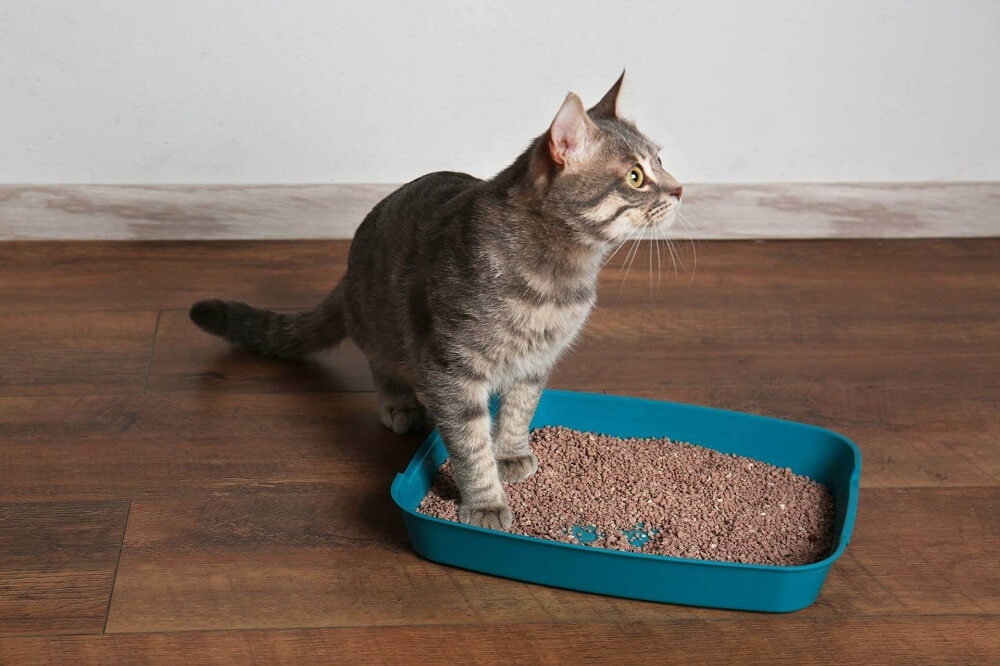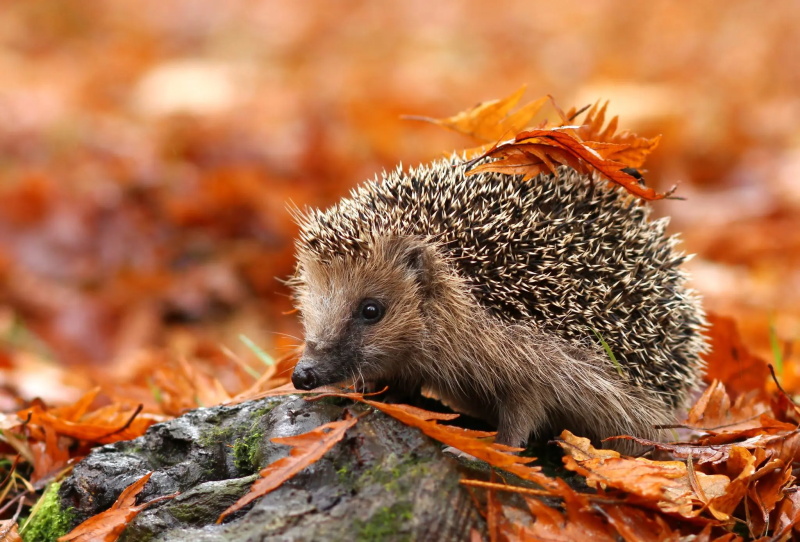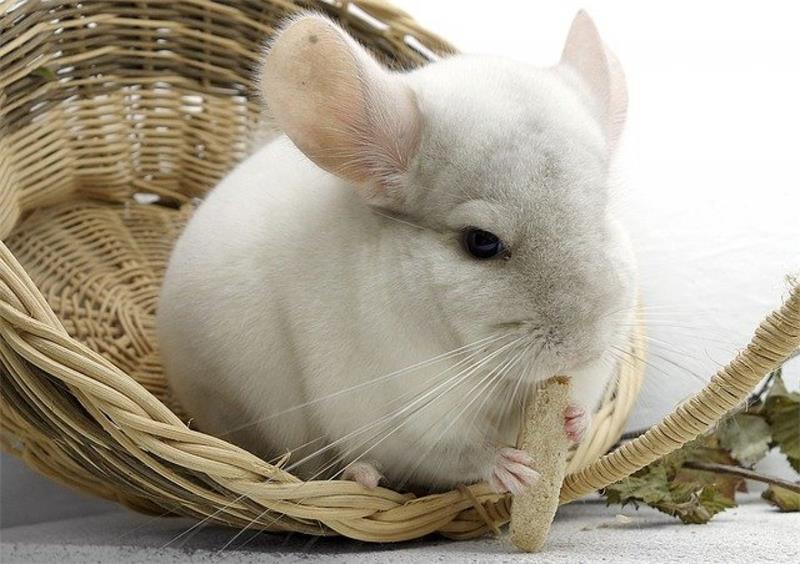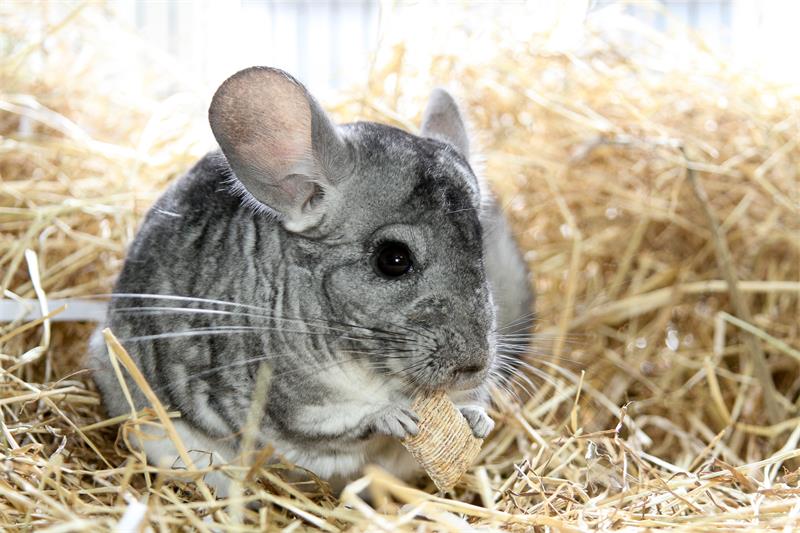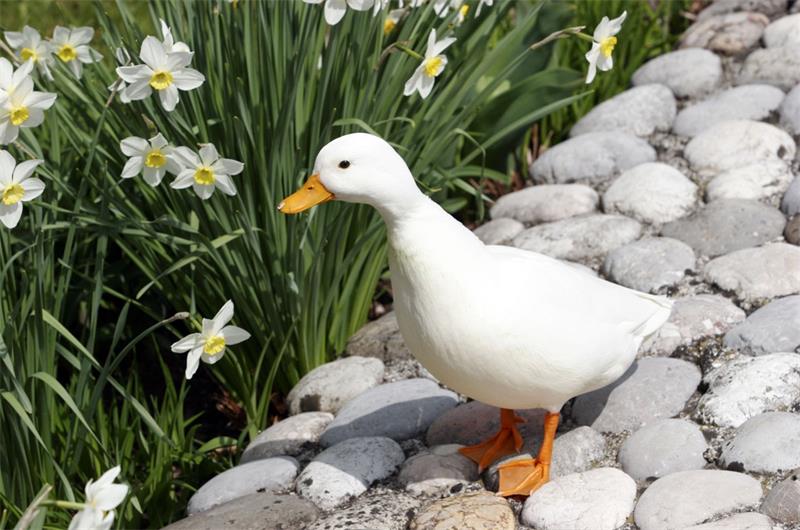
Table of Contents
Call ducks are small, cute, and friendly waterfowl that make great pets and backyard companions. However, like any other animal, they can also suffer from various health problems that can affect their well-being and productivity. In this article, we will discuss some of the most common health problems in call ducks and how to prevent and treat them.
Bumblefoot
Bumblefoot is a bacterial infection of the footpad that can occur in ducks. The infection is usually caused by Staphylococcus bacteria, and it can lead to swelling, redness, and pain in the affected foot. In severe cases, the infection can spread to the bones and joints, causing serious damage.
Bumblefoot is most commonly seen in pet ducks but can also occur in wild birds. It is often caused by a cut, hard landing, or splinter that allows bacteria to enter the wound. To prevent bumblefoot, it is important to keep your ducks’ living area clean and dry, and to provide them with soft bedding and smooth surfaces to walk on. You should also check your ducks’ feet regularly for any signs of injury or infection.
If you notice any symptoms of bumblefoot in your duck, you should consult a veterinarian as soon as possible. Treatment typically involves antibiotics and pain relief, but in severe cases, surgery may be necessary. With prompt treatment, most ducks recover from bumblefoot without any long-term complications.
Sticky Eye
Sticky eye is a condition where the eye becomes irritated and inflamed due to a build-up of debris on the surface of the eye. The debris can be anything from dust to pollen, and it can cause the eye to become watery, crusty, or swollen. In severe cases, sticky eye can lead to blindness.
To prevent sticky eye, it is important to keep your ducks’ living quarters clean and free of debris. Ducks should also be regularly checked for any signs of irritation or inflammation. If a sticky eye is detected early, it can often be treated with a simple cleaning regimen using saline solution or warm water. However, if the condition is allowed to progress, it can cause permanent damage to the eye.
If your duck has a persistent or severe case of sticky eye, you should seek veterinary attention. Your vet may prescribe antibiotics or anti-inflammatory drugs to treat the infection and reduce inflammation. You may also need to apply an eye ointment or drops to help heal the eye.
Prolapsed Vent
A prolapsed vent is a condition where the rectum or cloaca (the opening for excretion and reproduction) is pushed out of the body, usually as a result of straining². This can happen during laying, when the bird is constipated, or when it suffers from diarrhea. A prolapsed vent can be very painful and uncomfortable for the duck, and it can also expose the organ to infection and injury.
To prevent a prolapsed vent, it is important to provide your ducks with a balanced diet that contains enough fiber and water. You should also avoid overfeeding your ducks or giving them too many treats that can cause digestive problems. If your duck has diarrhea or constipation, you should try to identify and eliminate the cause of the problem.
If your duck has a prolapsed vent, you should try to gently push the organ back into place using a clean cloth soaked in warm water². You may also need to apply some lubricant or honey to help ease the process. If the prolapse is severe or persistent, you may need to take your duck to a vet for surgical repair. In addition to fixing the prolapse, your vet may also prescribe antibiotics or anti-inflammatory drugs to prevent infection and reduce swelling.
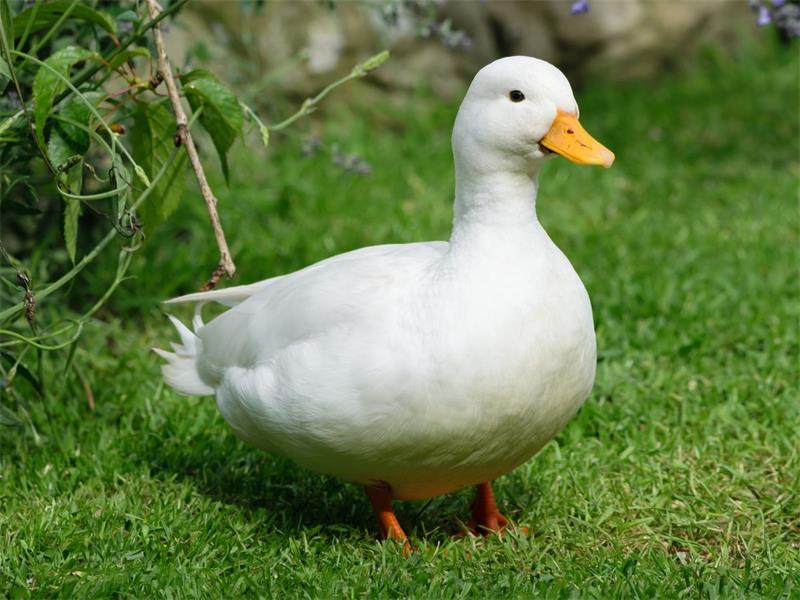
Wet Feather
Wet feather is a condition where the feathers of a duck are waterlogged and unable to provide insulation². This can happen if the duck is kept in a wet environment, or if it gets wet and is unable to dry off properly. Wet feathers can lead to hypothermia, as the feathers are no longer able to trap heat effectively.
To prevent wet feather, it is important to provide your ducks with a dry and sheltered place to sleep at night. You should also make sure they have access to clean water for bathing and preening during the day. Wet feather is a condition where the feathers lose their natural waterproofing and become soggy and matted. This can lead to skin infections, hypothermia, and reduced egg production. By keeping your ducks dry and clean, you can help them avoid this problem and stay healthy and happy.
Wry Neck
Wry neck is a condition that affects ducklings and can be fatal if not treated. It can be caused by a vitamin deficiency, blow to the head, or ingestion of toxins. The duckling may be unable to hold its head up or walk correctly. The head may twist to one side or tilt backwards, giving the appearance of a crooked neck.
Wry neck can be prevented by providing your ducklings with a balanced diet that contains enough vitamin E and selenium. These nutrients are essential for the proper functioning of the nervous system and the muscles. You can supplement your ducklings’ diet with vitamin capsules or add foods like brewers yeast, bran, sunflower seeds, wheat germ, parsley, sage, thyme, cinnamon, spinach, dandelion greens, alfalfa, marjoram, or turmeric to their diet.
To treat wry neck, you should also increase the intake of vitamin E and selenium for your duckling. You can also massage the neck gently to help relax the muscles and improve blood circulation. You may need to hand-feed and water your duckling until it recovers. It’s important to recognize the signs of wry neck early and get the duckling treated as soon as possible, as the condition can progress quickly and become fatal.
Impacted Crop
An impacted crop occurs when a duck’s crop becomes too full of food and water, resulting in a hard, compacted mass. This can happen if a duck drinks too much water or eats too much food at one time. Impacted crops can also be caused by eating foreign objects, such as stones or bits of plastic.
An impacted crop can prevent food from passing through the digestive system, causing malnutrition and dehydration. It can also cause discomfort and pain for the duck. Symptoms of an impacted crop include a swollen or lumpy crop, loss of appetite, weight loss, lethargy, and vomiting.
To prevent an impacted crop, it is important to provide your ducks with a balanced diet that contains enough fiber and water. You should also avoid overfeeding your ducks or giving them too many treats that can cause digestive problems. You should also check your ducks’ living area for any potential hazards that they might ingest.
To treat an impacted crop, you should try to massage the crop gently to break up the mass and encourage movement. You can also give your duck some olive oil or coconut oil to help lubricate the crop and ease the passage of food. You may need to hand-feed and water your duck until it recovers. If the mass does not move or if your duck shows signs of distress, you should take it to a vet for further treatment.
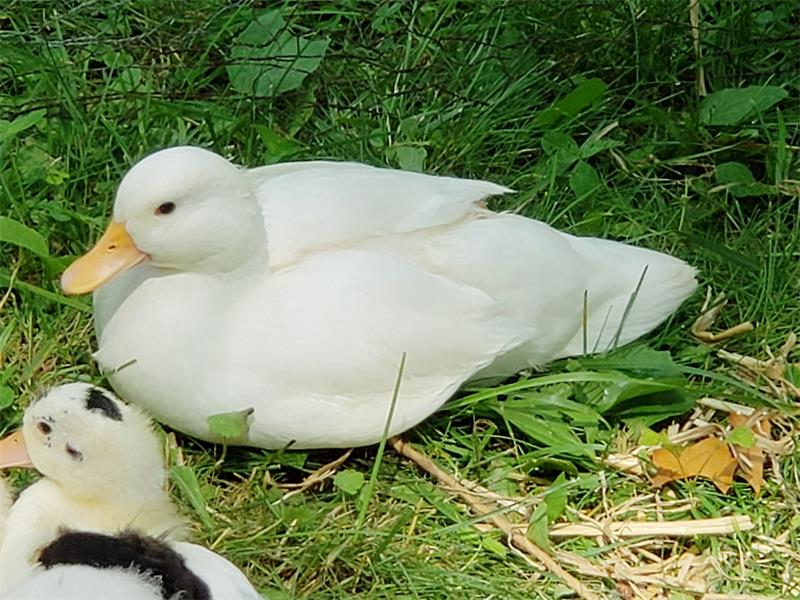
Arthritis
Arthritis is a degenerative inflammatory disease of the joints that can affect ducks of any age, but is more common in older or heavier birds. It can be caused by infection, trauma, degenerative changes, or metabolic disorders. Arthritis can cause pain, stiffness, swelling, and reduced mobility in the affected joints.
Arthritis can be prevented by providing your ducks with a balanced diet that contains enough vitamins and minerals, especially vitamin E and selenium. You should also ensure that your ducks have enough space and exercise to keep their joints healthy and flexible. You should also avoid exposing your ducks to cold or damp conditions that can aggravate their joints.
To treat arthritis, you should consult a veterinarian who can prescribe anti-inflammatory and analgesic drugs to relieve the pain and inflammation. You can also supplement your ducks’ diet with natural sources of vitamin E and selenium, such as sunflower seeds, wheat germ, or spinach. You can also provide your ducks with soft bedding and ramps to make it easier for them to move around.
Egg Binding
Egg binding is a condition that occurs when a female duck is unable to expel an egg from her body. This can happen due to various reasons, such as nutritional deficiencies, obesity, old age, trauma, or malformed eggs. Egg binding can cause obstruction of the oviduct or cloaca, leading to infection, inflammation, and even death.
Egg binding can be prevented by providing your ducks with a balanced diet that contains enough calcium, vitamin D, vitamin E, and selenium. These nutrients are essential for the formation of healthy egg shells and the proper contraction of the muscles involved in egg laying. You should also avoid overfeeding your ducks or giving them too many treats that can cause obesity. You should also provide your ducks with a comfortable and stress-free environment for laying eggs.
To treat egg binding, you should consult a veterinarian who can diagnose the condition and determine the best course of action. Depending on the severity of the case, treatment may involve manual extraction of the egg, administration of calcium or oxytocin injections to stimulate contractions, or surgery to remove the egg. You should also keep your duck warm and hydrated until she recovers.
Duck Plague
Duck plague (also known as duck viral enteritis) is a highly contagious disease caused by a herpes virus that affects ducks, geese, and swans of all ages. It is an OIE-listed notifiable disease that can cause high mortality rates in flocks of waterfowl. It is spread through direct or indirect contact with infected birds or contaminated water, food, or equipment.
Duck plague can cause sudden death in affected birds, often without any prior signs of illness. Other signs may include loss of appetite, depression, nasal discharge, bloody diarrhea, and prolapsed cloaca. On post-mortem examination, hemorrhages and ulcers may be seen in various organs, especially the spleen, liver, and intestines.
Duck plague can be prevented by practicing strict biosecurity measures to avoid introducing the virus into a flock or a wetland. Infected or dead birds should be isolated and disposed of properly. Vaccination may be an option for some domestic flocks, but it is not recommended for wild birds. There is no specific treatment for duck plague, and supportive care is usually ineffective.
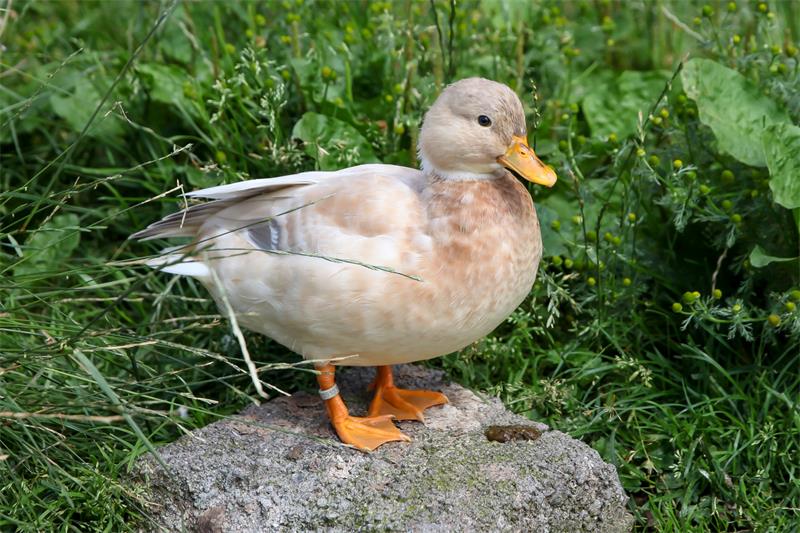
Botulism
Botulism is a serious and often fatal disease caused by a toxin produced by a bacterium called Clostridium botulinum. This bacterium thrives in low-oxygen environments, such as stagnant water, decaying matter, spoiled feed, or dead animals. Ducks can get botulism by ingesting the toxin from these sources, or by eating maggots that harbor the toxin. Botulism can affect ducks of any age, but young ducklings are more susceptible.
Botulism causes paralysis of the muscles, starting with the legs and wings, and progressing to the neck and eyelids. The duck may have difficulty walking, flying, swimming, or holding its head up. The duck may also have diarrhea, drooling, or vomiting. In severe cases, the duck may die from respiratory failure or drowning.
Botulism can be prevented by keeping your ducks’ living area clean and dry, and removing any potential sources of contamination. You should also provide your ducks with fresh water and feed, and avoid overstocking your pond or enclosure. If you find any dead birds or animals near your ducks, you should dispose of them properly and disinfect the area. Vaccination may be an option for some domestic flocks, but it is not available for wild birds.
To treat botulism, you should consult a veterinarian who can diagnose the condition and administer an antitoxin if available. The antitoxin can neutralize the toxin if given early enough, but it is not always effective or practical. You should also provide supportive care for your duck, such as keeping it warm and hydrated, and feeding it with a syringe if needed. You may also need to treat any wounds that may have allowed the bacterium to enter the body.
Duck Hepatitis
Duck hepatitis is a complex disease syndrome caused by several viruses that affect young ducklings, usually less than six weeks of age. The most common and virulent virus is duck hepatitis A virus type 1 (DHAV-1), which belongs to the genus Avihepatovirus in the family Picornaviridae. Other viruses that can cause duck hepatitis include duck hepatitis A virus types 2 and 3 (DHAV-2 and DHAV-3), duck astrovirus types 1 and 2 (DAstV-1 and DAstV-2), and duck hepatitis B virus (DHBV), which is a hepadnavirus that infects older ducks.
Duck hepatitis is characterized by a short incubation period, sudden onset, high mortality, and characteristic liver lesions. Affected ducklings may show signs of lethargy, loss of balance, spasmodic paddling, opisthotonus, diarrhea, drooling, or vomiting. Death may occur within minutes or hours of infection. Mortality rates may reach up to 95% in susceptible flocks.
Duck hepatitis can be diagnosed by viral isolation, PCR, or immunofluorescence tests on liver samples. Post-mortem examination may reveal an enlarged, pale, and hemorrhagic liver with necrotic foci. Other organs may also show congestion and hemorrhage.
Duck hepatitis can be prevented by vaccination, biosecurity measures, and hygiene practices. Vaccination against DHAV-1 is commercially available and involves two or three doses. Biosecurity measures include isolating new or sick birds, disinfecting equipment and premises, and removing potential sources of infection such as dead animals or decaying matter. Hygiene practices include providing fresh water and feed, avoiding overcrowding, and reducing stress.
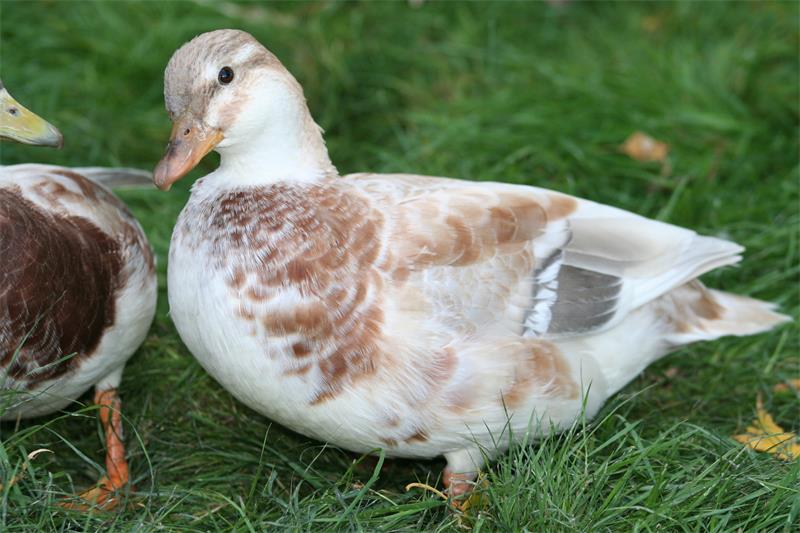
Duck Lice
Duck lice are tiny parasitic insects that live on the feathers of ducks. They feed on the feather material and cause irritation and damage to the plumage. Duck lice are usually species-specific, meaning they only infest ducks and not other birds or animals. The most common lice found on ducks are feather lice (Menoponidae) and biting lice (Philopteridae).
Duck lice can cause itching, restlessness, feather loss, reduced egg production, and poor growth in affected ducks. In severe cases, duck lice can also transmit diseases such as avian pox or fowl cholera. Duck lice can be seen with the naked eye as small brown or black specks on the feathers or skin.
Duck lice can be prevented by keeping your ducks’ living area clean and dry, and avoiding contact with wild or infected birds. You should also inspect your ducks regularly for any signs of infestation. Duck lice can be treated by applying a topical insecticide or dusting powder to the affected areas, or by dipping or spraying your ducks with a suitable solution. You should also clean and disinfect your ducks’ housing and equipment.




